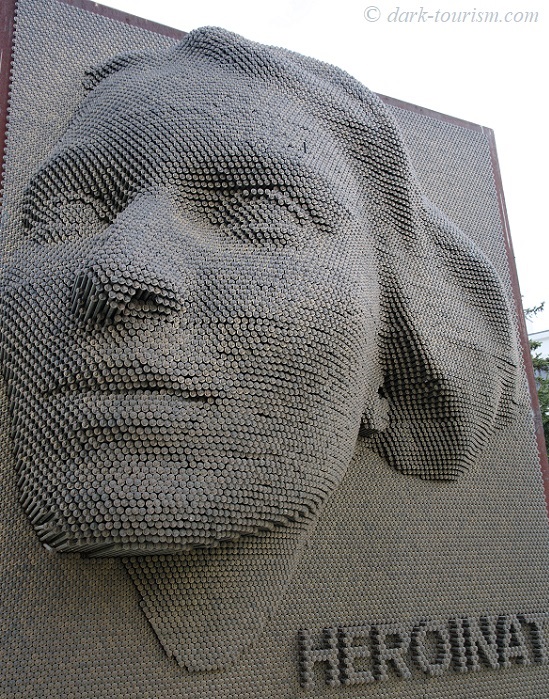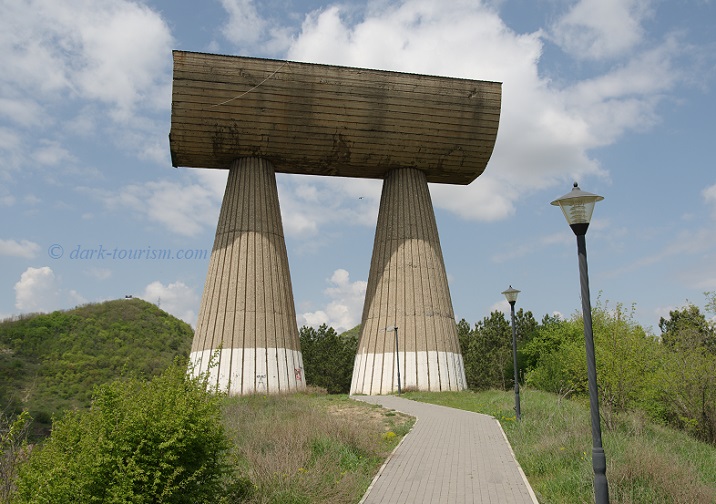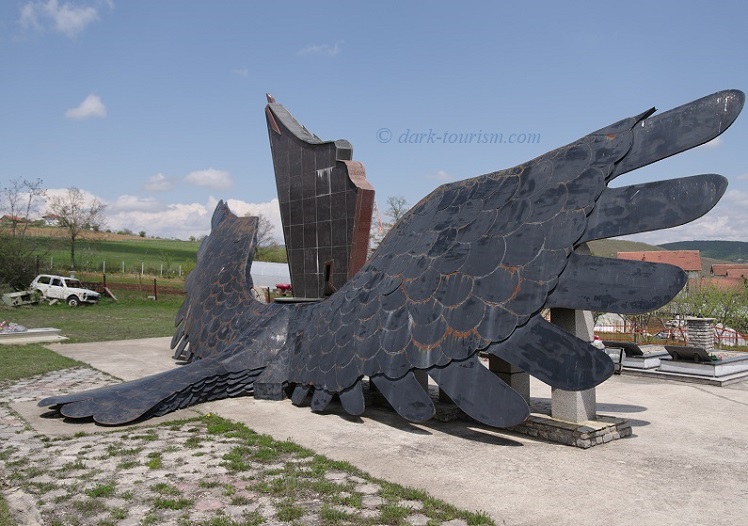A few weeks ago, over the long May Day weekend, I travelled, for the first time, to Kosovo, the newest country in Europe: it declared itself independent only in 2008 … after a long period of struggle and unrest in the wake of the break-up of Yugoslavia (Kosovo, which is predominantly ethnic Albanian, was a semi-autonomous part of Serbia in the Yugoslav federal state).
This struggle included the full-blown Kosovo War of 1998/99 that eventually prompted a NATO intervention and the subsequent stationing of peacekeeping troops (KFOR) in the territory. To date, only a little over half of the countries represented in the United Nations recognize Kosovo as an independent country, including most Western countries (except Spain – guess why), but unsurprisingly not Serbia, or its big ally Russia.
My Kosovo trip may have been short but it was intense and very insightful. And I have just finished uploading all the new chapters for the country on to my main website. Do take a look!
Here’s a short summary and overview:
I was based in the capital city Pristina for two nights in a nice hotel. I arrived early enough on the Saturday to have the afternoon for exploring what Kosovo’s compact capital city centre has to offer. The Sunday I used for a day trip to northern and western parts of Kosovo – see below.
Kosovo’s capital Pristina doesn’t have the best of reputations. Often you find it described as the “ugliest” capital city in Europe. I quite liked being there, though, and the pedestrianized inner city core was pleasant enough. But it’s true that it doesn’t have many traditional landmarks, no picturesque Old Town, in fact very few old buildings at all (just a couple of medieval mosques and a few Ottoman-era town houses). That is so partly because in the Yugoslav era it was the drive for modernism that trumped everything. One result of this is the iconic architecture of the National Library, with its bizarre metal-mesh cladding and countless skylight domes, as seen in this photo:

Again, the building’s reputation is dire, frequently being called one of the ugliest buildings in the world. While it’s harder to defend Pristina’s cityscape appeal at large, in the case of the National Library I find such a judgment of “ugliness” totally unjustified. To me it’s a fantastic piece of very individualistic modern architecture that I find anything but ugly!
The structure you see just behind the library in the photo above is more politically charged than just aesthetically. This is an unfinished and now abandoned Serbian Orthodox cathedral. Construction was begun in 1992 at a time when Serbia under Slobodan Milosevic was pursuing a campaign of dismantling the semi-autonomy Kosovo used to enjoy in Yugoslavia. This also included what has become known by the ugly term “ethnic cleansing”. The construction of a Serbian Orthodox cathedral right in the middle of ethnic Albanian, and hence mostly Muslim, Pristina was of course a political provocation of the highest order. Work on the building ceased with the outbreak of the Kosovo War, and so the empty shell of raw concrete and brick walls just stands there abandoned on a piece of prime real estate right next to Pristina’s iconic National Library. No wonder it’s much hated by the locals and there have even been calls to pull it down altogether. Less drastic suggestions have included turning the building into a museum about the Yugoslav wars and the war crimes committed during that period – which from a dark-tourism perspective would of course be the most desirable outcome.
Pristina also sports a great number of monuments of all sorts, from a classic statue of Albania’s historic national hero Skanderbeg (smaller but very similar to the one in Tirana, Albania) to much neglected Yugoslav-era “spomeniks” (see this database – external link, opens in a new tab) and various memorial monuments related to the more recent conflicts in this contested corner of the Balkans. There are monuments commemorating Serbian atrocities, one expressing gratitude to KFOR, and the most bizarre one is a slightly misproportioned statue of Bill Clinton (US president at the time of the Kosovo War and a driving force behind the NATO intervention). But the most unusual of the lot I found was this monument:

This is supposed to be a tribute to the “heroines” of Kosovo – but when you read the bilingual plaque next to the monument you learn that it is actually dedicated to the ca. 20,000 women who became victims of rape used as a weapon of war by Serbia (as had happened before e.g. in Bosnia). While becoming a victim of any crime is hardly “heroic” in itself, surviving and overcoming such victimhood might well be. In any case it is quite commendable that this particular victimhood is acknowledged with such a large and centrally located monument. You don’t get that very often.
As is usually the case, however, most hero worship is still directed not towards women but towards men, and in Kosovo especially to one particular man: Adem Jashari. This is a name you simply cannot escape in Kosovo. You encounter it on arriving in the country at the Adem Jashari International Airport of Pristina; the National Theatre is named after him too, busts, statues and portraits of him are ubiquitous, every town and village seems to have at least an Adem Jashari Square or Street and you also see his image on the grandiosely brutalist Youth and Sports Palace complex in Pristina, pictured below:

The reason there is such a cult of personality revolving around Jashari is the fact that he is regarded as Kosovo’s National Hero. He was a co-founder and commander of the Kosovo Liberation Army (KLA) and led guerrilla operations in the wild 1990s against Serbs. Then in March 1998 Serbian “anti-terrorist” forces laid siege to Jashari’s family compound in the village of Prekaz. As he refused to surrender, the Serbian forces used their firepower of machine guns, tanks and artillery to massacre Adem Jashari along with almost 60 members of his family, including women, the elderly and several young children. This brutal act caused an international outcry and within Kosovo achieved the opposite of what the Serbs had been after (quelling the resistance). Now the Kosovars had a National Martyr, there was a surge in volunteers ready to join the KLA and avenge Adem Jashari. Thus the incident is seen by many as the actual starting gun for the Kosovo War.
The site of the atrocity in Prekaz was later turned into a veritable National Shrine to the “sacrifice” by Adem Jashari for the cause of Kosovan independence (so the narrative roughly goes). The core of the memorial site is the actual bullet-and-shell-hole-riddled ruin of the former Jashari family home, pictured below:

You can go up the stairs within the scaffolding that has been set up around the ruin (together with a protective roof) and get a close-up look at all the destruction. KLA symbols abound, as do depictions of Adem Jashari, on the ruin’s scaffolding itself and in the form of a large white marble bust next to the ruins. Nearby is the “martyrs’ cemetery” where all the victims of the massacre are buried, and a small memorial museum complements the complex. It’s clearly a veritable pilgrimage site for Kosovans (and the odd international dark tourist).
Prekaz lies on the edge of the town of Skenderaj and in the centre of this town stands a particularly heroically-posed Adem Jashari statue:

I visited Prekaz and Skenderaj as part of a longer “Western Kosovo Political Tour” with a very enthusiastic Kosovar driver-guide. The other main component of the tour was Mitrovica. This is a divided city in the north of Kosovo, where the political and ethnic schism that is at the core of the Kosovo conflict is still very visible. The northern part of Mitrovica is inhabited by some 15,000 ethnic Serbs and only very few Kosovo Albanians, whereas the part south of the River Ibar that flows through the city is almost entirely inhabited by ethnic Albanian Kosovars (some 50-60,000). A bridge crosses the river, but is blocked for car traffic and Italian Carabinieri (who serve as part of KFOR) guard the point of contact, but as a pedestrian you can easily walk across:

So we crossed the bridge and had a look around northern Mitrovica. It instantly felt like we were in a different country. Almost all inscriptions are in Serbian Cyrillic, Serbian beer brands are advertised, prices are in Serbian dinars rather than the euro (which the rest of Kosovo has adopted as their currency), and Serbian flags fly everywhere – and occasionally also the flag of Russia (even the presidential standard!).
Moreover, there were plenty of murals and graffiti that clearly express solidarity with Russia – and its war in Ukraine! I spotted several walls with a sprayed “Z” symbol. That’s the non-Cyrillic letter the Russian forces mark their tanks with that are involved in their “special military operation”. And it has also become a symbol of support for Russia and its war. A particularly remarkable piece of pro-Russian “street art” in Mitrovica that I saw was this:

The Serbian line below the knotted Serbian-Russian flags translates roughly as “Kosovo is to Serbia what Crimea is to Russia”, and the outlines of both territories feature on the flag representation. I admit it felt a little awkward taking photos like this, but I tried to be as discreet as possible.
That said, we never felt threatened or resented. In fact we even sat down in a street cafe with a friend of my guide’s, also an ethnic Albanian, but resident in northern Mitrovica. He also accompanied us around the rest of our walking tour of the city, on both sides of the river.
Eventually we got back in the car and drove across the other bridge over the River Ibar further east (so the roadblock on that city-centre bridge is actually more symbolic than practical!). We did so in order to make our way to the Yugoslav-era main landmark of Mitrovica: the huge Miners’ Monument:

This is a grand example of a concrete ‘spomenik’ designed by the renowned Bogdan Bogdanovic and was completed in 1973. The shape is supposed to represent a miner’s ore cart. That’s because Mitrovica has been a major mining town since antiquity and during WWII some miners from Mitrovica’s main lead and zinc mine apparently fought in the partisans’ resistance against fascist and Nazi occupation. As the monument stands towering over the city you get a good view from there as well.
The tour also included stops at several further monuments of varying significance and size, mostly related to the Kosovo War. The most remarkable of these I found was this (same photo as the one at the top of this post):

This recreation of the Albanian black eagle, which also features in the nation’s striking flag, has a wingspan of ca. 10 metres and overlooks a small war cemetery for KLA fighters. It was certainly the most flamboyantly designed of all the monuments that I saw on this trip.
.
Having finished and uploaded all the new Kosovo chapters for my main website, I’m actually caught up again with everything from my own travels – for only the second time ever in the nearly 15-year history of dark-tourism.com (the first time was celebrated in this earlier blog post). And the inclusion of Kosovo now takes the total count of countries covered on my website to 115!
.
This blog post will be the last one until I return from my next set of travels. On Saturday I’m flying to Namibia for about three weeks. And while there I probably won’t be able to do anything with the blog or website, also given that Wi-Fi is is said to be notoriously weak and patchy in that country. The day after I return from Namibia I’ll be straight off again, this time to Britain, for a family visit that was postponed from Christmas. So, realistically, I won’t be able to post anything new before some time in September. Please bear with me.




2 responses
hi im curious about which country have the most dark tourism in the world
Hi, in terms of the number of dark-tourism sites per country, I would say Germany – due to its various very dark chapters in history (Imperial times, WW1, the Nazi era and WWII, division during the Cold War and the communist regime in East Germany with the Stasi, etc.). Other countries with rich portfolios in dark tourism are e.g. the USA, Poland, France, Great Britain and Japan.